The third day of this year’s Oxford Lieder Festival, which is celebrating its twentieth anniversary, focused on Scandinavian song, in particular the music of Wilhelm Stenhammar (1871–1927). This self-taught Swedish composer, pianist and conductor, born 150 years ago, assimilated diverse styles and influences in his musical langauge: one can hear the presence of Brahms and Wagner, alongside Nordic voices such as those of Grieg and Berwald, and also Scandinavian folksong. By the evidence of the day’s performances, Stenhammar – who composed two operas, orchestral and choral music, as well as works for chamber ensembles and solo piano – was a master of Swedish Romantic art song. Indeed, Grove describes his songs as being ‘finely wrought’ and setting ‘poems chosen with discriminating taste’, going on to suggest that several ‘are among the most prized art songs of Sweden’.
All of the evening concerts at this year’s Oxford Lieder festival are being performed twice, at 5.30pm and 8.15pm, allowing for a socially distanced seating arrangement, and the nave of St John the Evangelist – candles flickering gently in glass jars perched on the small black-draped tables which separated the groups of chairs, the roodscreen festooned with tumbling fairy lights – was a welcoming venue for the 8.15pm performance, which was also live-streamed. Roderick Williams had had to withdraw and so baritone Jakob Högström joined soprano Camilla Tilling and the Festival’s artistic director, Sholto Kynoch, to perform a selection of Stenhammar’s songs.
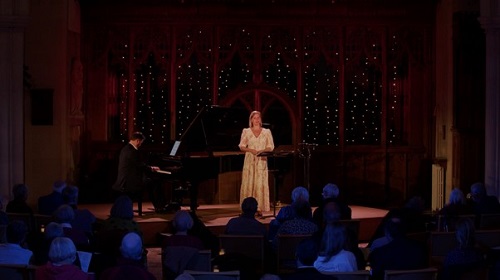
If singers’ unfamiliarity with the Swedish language is one of the reasons for the neglect of Stenhammar’s songs then on this occasion the texts obviously presented no difficulties for the two soloists, both of whom herald from Stenhammar’s native land. Tilling presented the first sequence of six songs, which set poems by Johan Ludvig Runeberg, Verner von Heidenstam and Gustaf Frödling. Her fairly light lyric soprano seems perfectly suited to these songs. Tilling’s delivery was relaxed and natural, the tone clear and fresh, and the phrases flowed easily, emphasising the fluency of Stenhammar’s melodies. The characterisation was expressive and communicative: in the opening song, ‘Flickan kom ifrån sin älsklings möte’, Tilling employed a fuller, darker tone to convey the rapture of the maiden as she returns from an amorous tryst – “I have eaten raspberries, and with the juices painted my lips,” she tells her mother – but a grave hush, the tension enhanced by the sparseness of the piano accompaniment, marked her despair upon learning of her lover’s unfaithfulness.
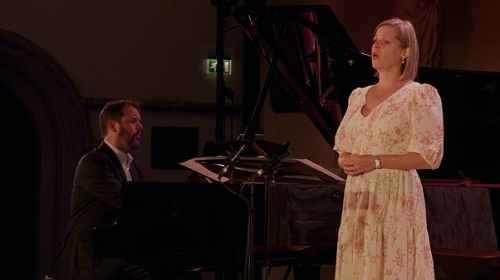
‘Flickan knyter i Johannenatten’ (Midsummer Eve) captured both the carefree optimism and passionate hopefulness of youth, and the folky wistfulness was beautifully conveyed. Tilling enjoyed the story-telling element of many of these songs, with their changing moods and dramas. The poet-speaker’s pleas to the eponymous Ingallil to sing him a song bloomed with tender warmth, though the close of the song faded with magical delicacy. Kynoch was a relaxed and responsive musical partner. The piano’s figuration rippled with the passion and urgency within the heart of the poet-speaker in ‘Fylgia’, who begs the ‘maid of beauty’s longing’ not to desert him, while a beautifully shaped counter-melody at the start of ‘I lönnens skymning’ (In the twilight of the maple tree) foreshadowed the voice that whispers from the shadows.
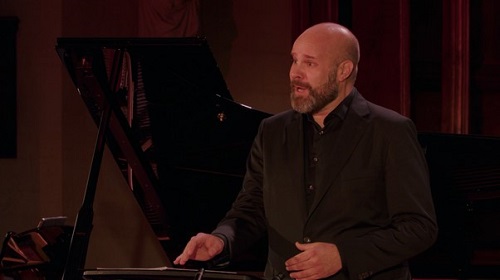
Jakob Högström
Jakob Högström joined Kynoch for the ten songs which form Visor och stämningar (Songs and Moods). Ambitious in scope, diverse of character and musically sophisticated, these songs are more technically demanding and Högström demonstrated impressive assurance and control. His baritone has an appealing tone, if a little uniform in colour, and his phrasing was thoughtful and communicative. After the easeful wandering of ‘Vandraren’, ‘Nattyxne’ (Butterfly Orchid) was more earnest and Högström’s sensitivity to the text brought forth the intensity of the poetic imagery. The subtle textual heightening was complemented by Kynoch’s delicate pianissimo cascades, the repetitions of which evoked the restless shimmering motions of the natural world – motions which stirred with an almost angry ardour in a final image of desecration, before calm was restored by the piano’s magical postlude. ‘Stjärnan’ (The Star) was stormy and agitated: “My brain roars like fire” anguishes the poet-speaker for whom the sacred stars remain forever out of reach, and Högström made much of the dynamic contrasts which convey such unfulfilled yearning. Kynoch smoothly delineated the dense accompaniment to ‘När genom rummet fönsterkorsets skugga ligger’ (When the shadows of the casement falls in the room’), sensitively supporting the emotional ‘heaviness’ of the song. In contrast, ‘Varför till ro så brådt?’ (Why hurry so to rest?) made its impact through brevity and understatement, the baritone’s soft head voice wistfully intimating man’s mortality at the close.
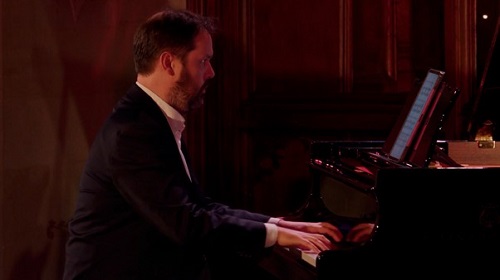
The phrases ebbed and flowed with a story-teller’s ease at the start of ‘Jungfru blond och jungfru brunett (Miss Blonde and Miss Brunette), the piano’s clipped staccato evoking the slightly tense dance of the titular protagonists, but the clouds deepened as the song progressed, building compelling towards the ominous warning issued by the darkness, which Högström delivered with concentrated focus and intent: “Dearest little maidens, I shall have you in time …” ‘Lycklandsresan’ (To the land of bliss) skipped with a lighter step, propelled by the piano’s flourishes and sprightly rhythms, and Högström enjoyed the more extrovert character of this song. The closing song, ‘Prins Aladin af Lampan’, sets a poem by Frödling in which the fairy-tale lamp serves as a metaphor for artistic creativity. Högström and Kynoch negotiated its reeling moods, which border on the abyss at times, but the final assertion was a strong, affirmative one, Högström rising surely to the top of his register: the lamp conveys a creative power which makes its owner strong.
Tilling returned to the platform for the final five songs. The stanzas of ‘Melodi’ were sensitively shaped, while an attentiveness to the small details of ‘Stjärnöga’ (Stareye) – the slightest break in a phrase, the lightening of the tone as the speaker appeals for peace – helped Tilling to capture the poignancy of passing time. This quality also characterised ‘Vid fönstret’ (At the window) from the same Op.20 set and ‘Månsken’ was similarly pensive, Tilling’s silvery tone capturing the eeriness of the moonlit world, as a semitone gesture in the piano alluded to the moonbeam which has “lost its way”. ‘I Skogen’ (In the forest) concluded the programme with a glowing appeal to the natural world to share its joy with mankind, and such contentment was expressed in an encore which brought the two singers together to perform Mozart’s ‘Bei Männern welche Liebe fühlen’, which they had first sung, in Swedish, twenty years before, and which evidently brought them, as well as the audience in St John the Evangelist, much pleasure.
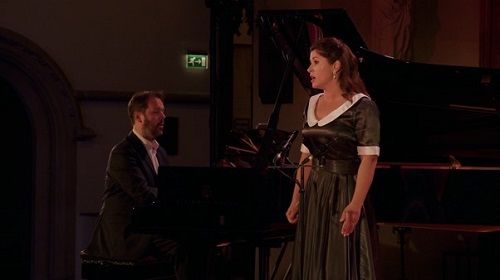
Each Evening Concert begins with a performance by one of the Festival’s chosen ‘Emerging Artists’, and on this occasion the Swedish soprano, Agnes Auer preceded Stenhammar’s songs with a sequence of songs by six of Stenhammer’s fellow Swedes. Auer has a smooth, creamy soprano and she deployed it charmingly as the over-excited young maiden in Adolf Fredrik Lindblad’s ‘En ung flickas morgonbetraktelse’, reflecting upon how she will tease her would-be beloved when he pays a visit that day. Her gentle lyrical line, and shining tone, captured the quietude of the evening in the same composer’s ‘Aftonen’, while in ‘Pan’ by Ture Rangström this shine served to evoke the exotic colours and erotic energies in which Pan bathes, languorously. Hugo Alfvén’s ‘Saa tag mit Hjerte’ (So take my heart) throbbed with feeling, and Auer communicated both the passion and the vulnerability of the poet speaker; a lighter vibrato in Bo Linde’s ‘Äppelträd och päronträd’ (The apple and the pear tree), complemented by light rustles in the piano part, conveyed the ripe freshness of the blossoming spring. After the cool sadness of Wilhelm Peterson-Berger’s ‘När jag för mig själv’ (When I by myself), the composer’s ‘Aspåkerspolska’ danced home lightly and with freedom.
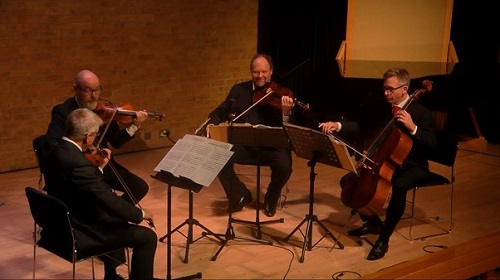
Earlier in the day, there had been an opportunity to hear some of Stenhammar’s chamber music, when the Stenhammar Quartet performed the fourth of the composer’s six string quartets, in the Jacqueline du Pré Music Building. The Fourth Quartet is characterised by dense motivic unity across the movements, and by harmonic adventurousness, and the Stenhammar Quartet had the measure of its complexities, playing with assured unity and communicative musicality. The dreamy Adagio was particularly captivating, the first violin’s opening G-string melody embraced by a range of accompanying timbres and colours. The Scherzo was crisp and had a firm rhythmic stamp; the driving energy never flagged and the ensemble’s consistency of tone and articulation was impressive. The final Andante semplice variations – based on the Swedish folk song ‘Och riddaren han talte till unga Hillevi’ (And the Knight Spoke to Young Hillevi) – demonstrated Stenhammar’s inventiveness and command, and the Quartet’s collective appreciation of the composer’s language and form.
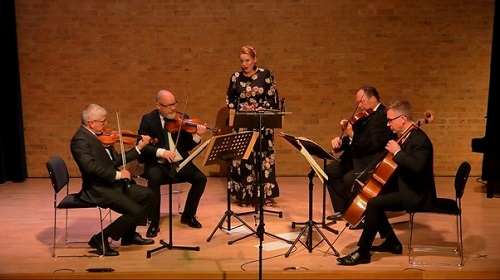
The Quartet began their recital with the Elegy and Intermezzo from Stenhammar’s suite Lodolezzi sjunger, incidental music to a play, Lodolezzi Sings, by Hjalmar Bergman, and in between the two works by Stenhammar they were joined by the mezzo-soprano Lotte Betts-Dean to perform five movements from Acht Lieder mit Begleitung von Streichquartett by the violinist, composer and publisher, Henri Marteau. Marteau put his virtuosity and knowledge of his instrument to effective use in drawing a wide range of quasi-orchestral sonorities from the four string players, who are asked to employ diverse violin techniques to create timbres which capture the richly scented imagery of the texts by Sully Prudhomme and François Coppé – the quietly falling tears of ‘Thränentropfen’, the vivid murmurs of nature in ‘In dem Garten meiner Seele’, the blissful fluttering of birds’ wings in ‘Sonnenlied’.
As one of the Major-General’s daughters, Betts-Dean made a vibrant contribution to Opera Holland Park’s The Pirates of Penzance in August, and she demonstrated a similar confident theatricality here, relishing the radiance of ‘Sonnenlied’ in which the shining haze of the strings’ rapid string-crossings at the start was balanced by the mezzo-soprano’s blazing, glistening heights at the close. She negotiated the tricky vocal leaps in ‘Liebeslied’ with accuracy and a command of the rather expressionistic and, at times, fragmented idiom – the motionless strings give little support here. There were moments of touching sensitivity, too, such as the poignant diminuendo at the close of ‘Thränentropfen’, as the poet-speaker sings of the tears that “drip down into my heart” as “quiet songs rise from its wounds”. In ‘Herbst’ (Autumn), the cello’s arpeggio-figures created a lovely flow which, together with the first violin’s melody, carried us into the world of dreams; and, in the final stanza Betts-Dean used her full lower register, set against a bare interval in the strings, to evoke “the glow of life” that the flowers cast into even “the darkest grave”. At the rhapsodic close of ‘In dem Garten meiner Seele’, voice and violin were one.
The 20th Oxford Lieder Festival continues until 23rd October.
Claire Seymour
Songs and Moods: Agnes Auer (soprano), Camilla Tilling (soprano), Jakob Högström (baritone), Sholto Kynoch (piano)
Adolf Fredrik Lindblad – En ung flickas morgonbetraktelse, Aftonen; Ture Rangström – Pan; Gustaf Nordqvist –Bön – Tala, älskade tala; Hugo Alfvén – Saa tag mit Hjerte; Bo Linde – Äppelträd och päronträd Op.40 (The apple tree and the pear tree, from Fjorton sånger om våren); Wilhelm Peterson-Berger – När jag för mig själv, Aspåkerspolska; Wilhelm Stenhammar – Flickan kom ifrån sin älsklings möte (Op.4 No.1), Flickan knyter i Johannenatten, Jutta kommer till Folkungarna (Op.37 No.1), I lönnens skymning (Op.37 No.2), Ingalill (Op.16 No.3), Fylgia (Op.16 No.4), Visor och stämningar, Songs and Moods (Op.26), Melodi, Stjärnöga (Op.20 No.1) from Fem sånger till dikter av Bo Bergman (Five songs to poems by Bo Bergman Op.20), Vid fönstret (Op.20 No.2) Månsken (Op.20 No.4), I Skogen.
St John the Evangelist, Oxford; Sunday 10th October 2021.
A Swedish Sensation: Lotte Betts-Dean (mezzo-soprano), Stenhammer Quartet
Wilhelm Stenhammar – Elegy & Intermezzo (from Lodolezzi sjunger Op.39); Henri Marteau – Thränentropfen, In dem Garten meiner Seele, Liebeslied, Sonnenlied, Herbst (from Acht Lieder mit Begleitung von Streichquartett), Wilhelm Stenhammar – String Quartet No.4
Jacqueline du Pré Music Building, St Hilda’s College, Oxford; Sunday 10th October 2021.